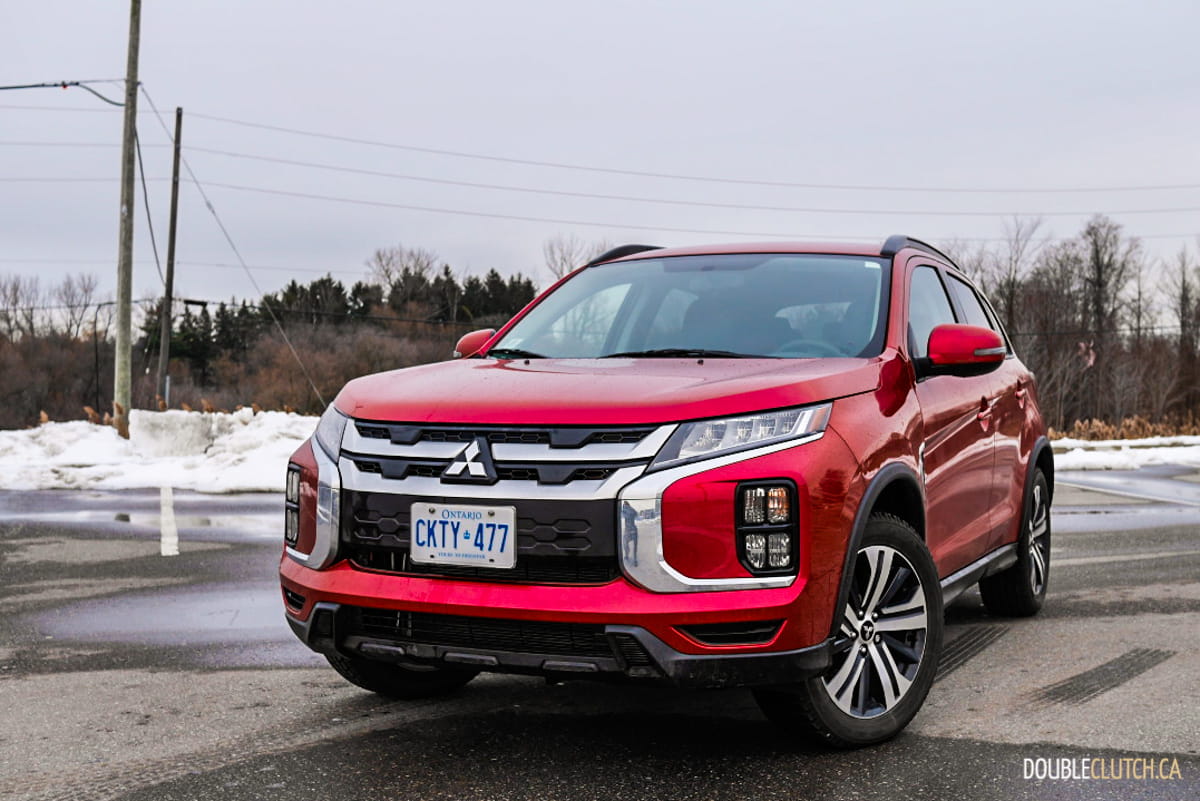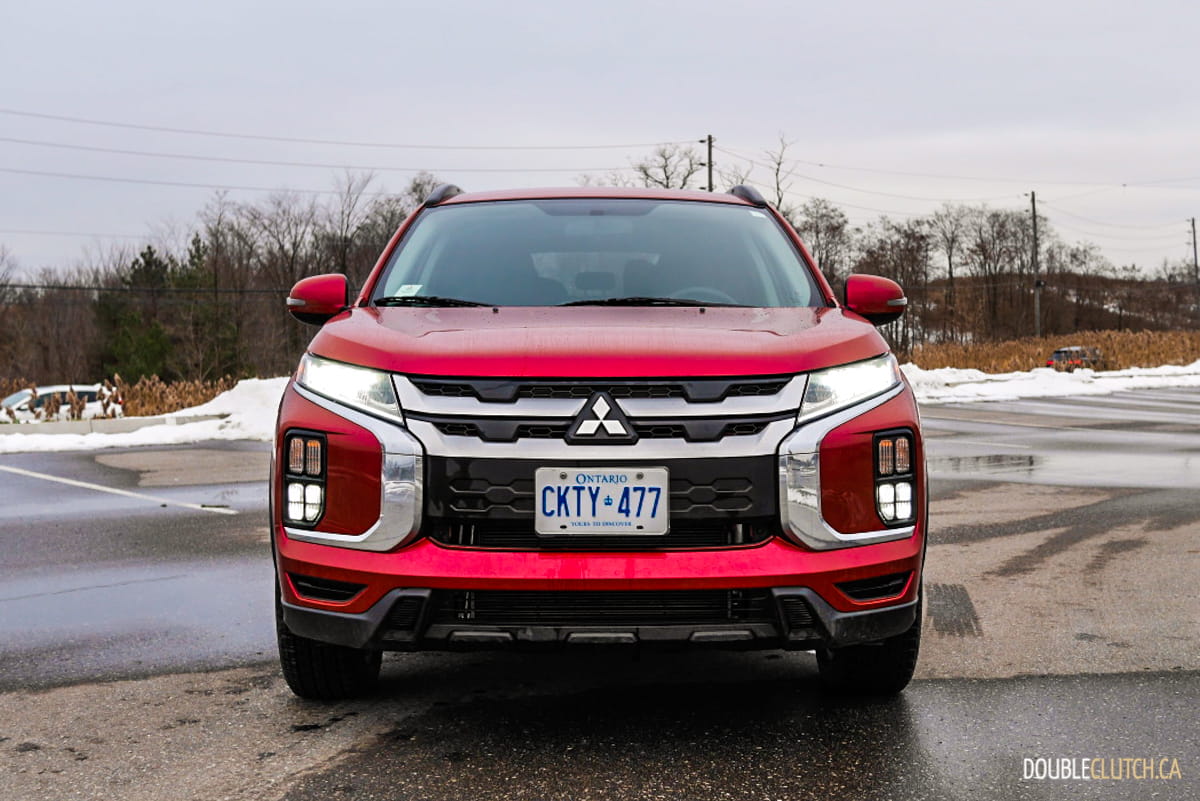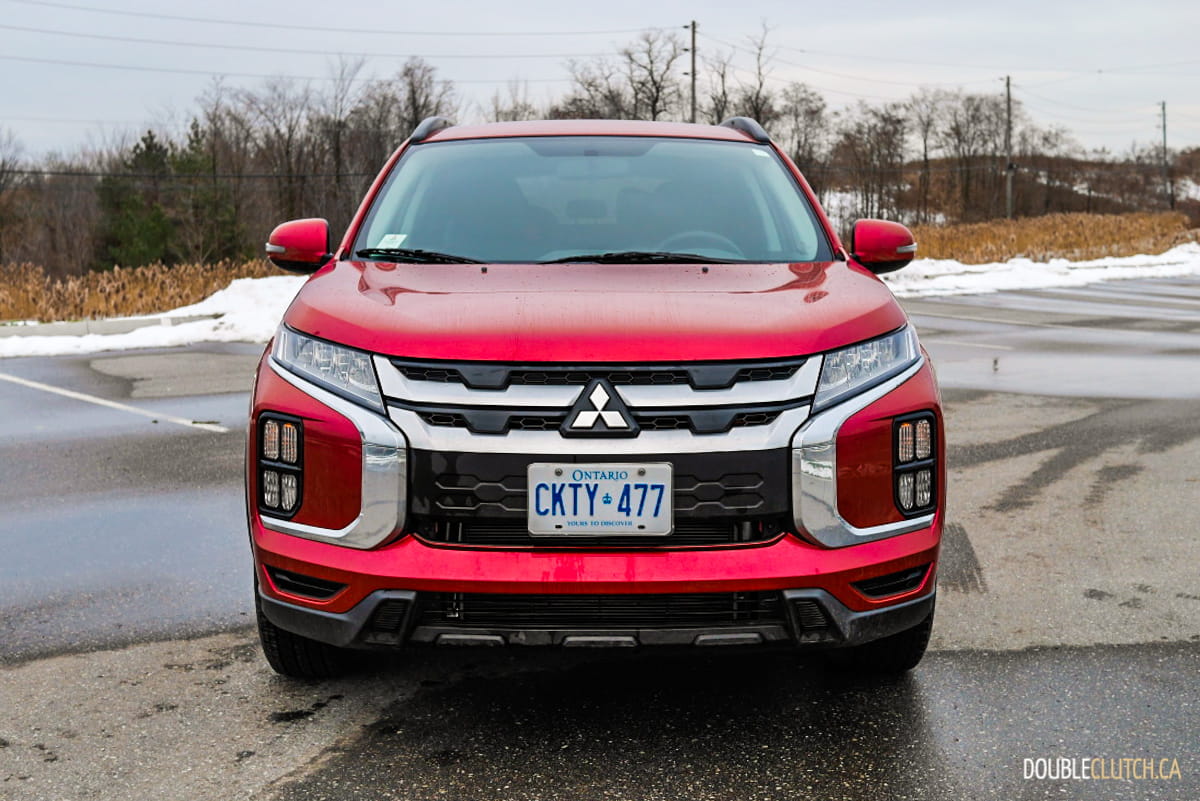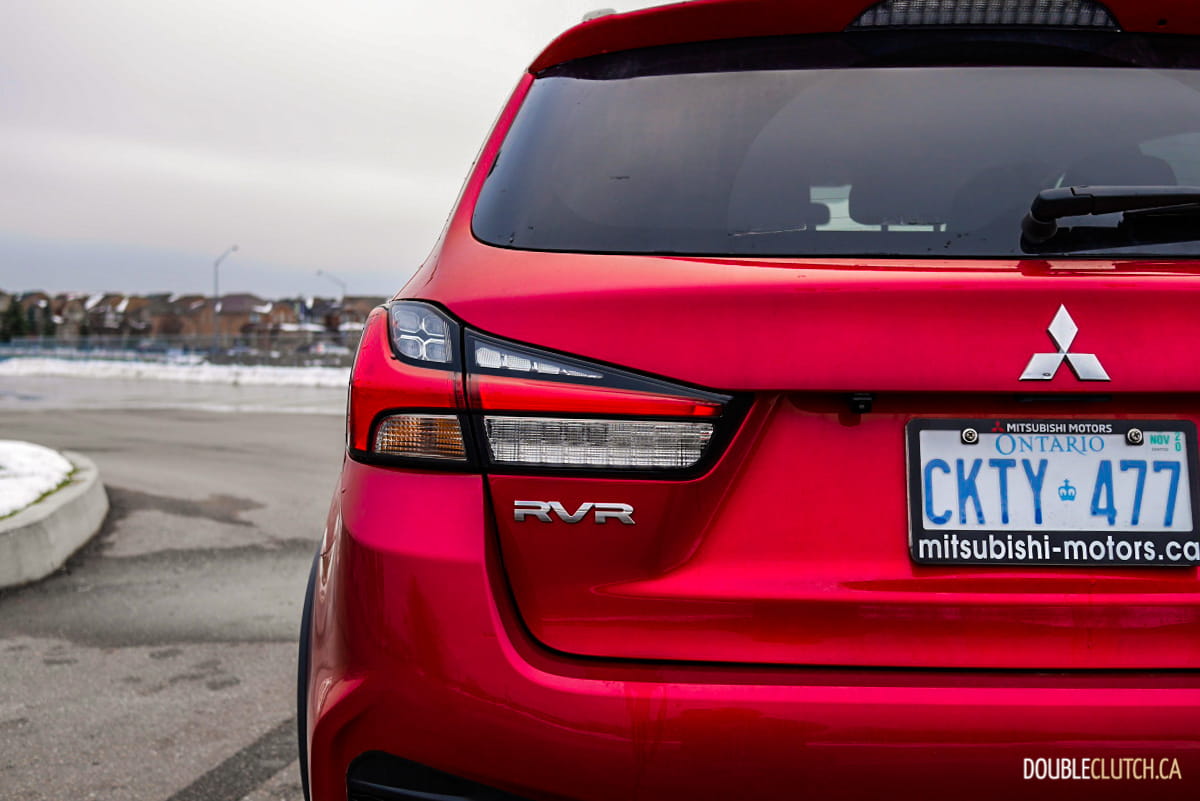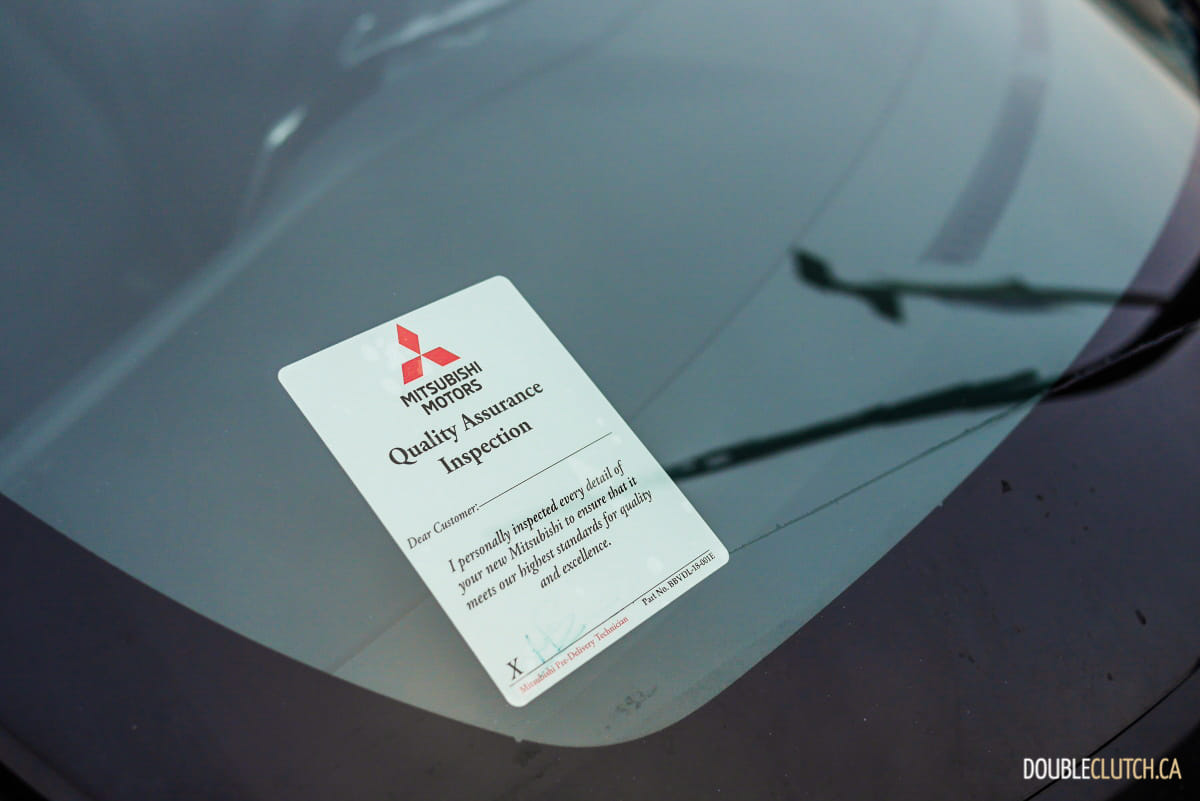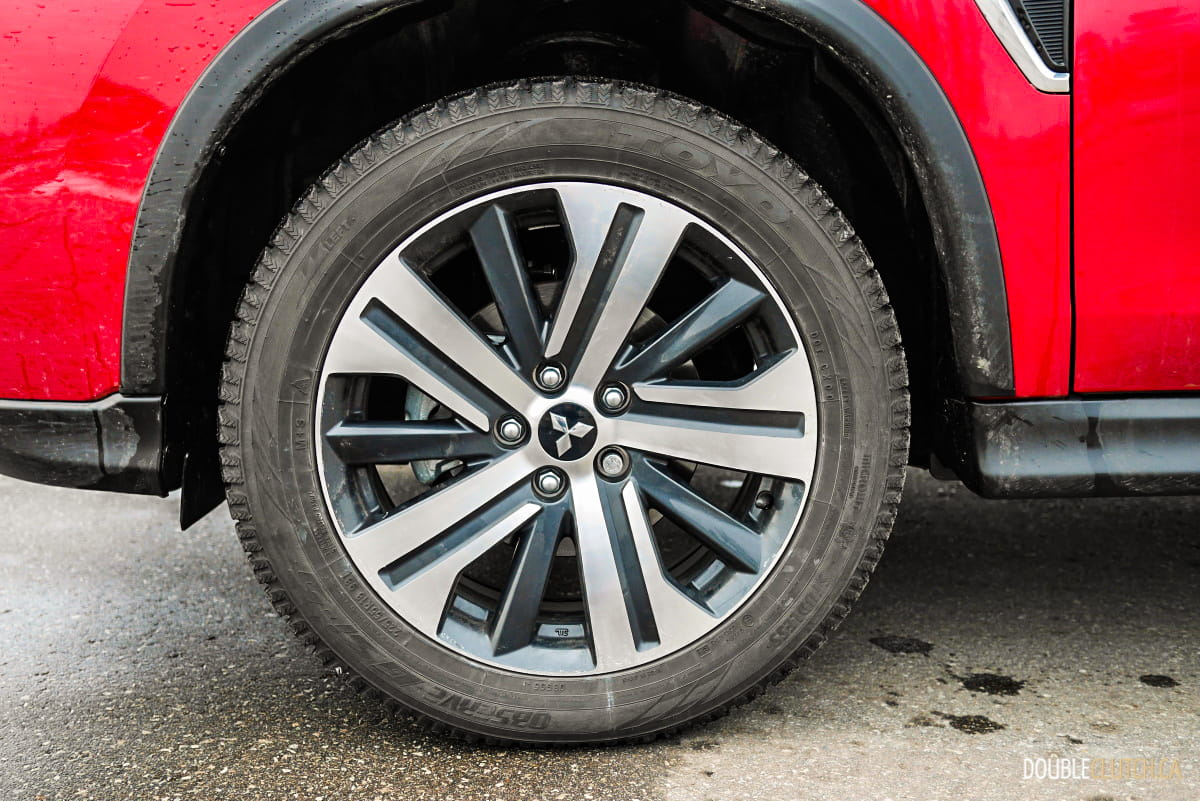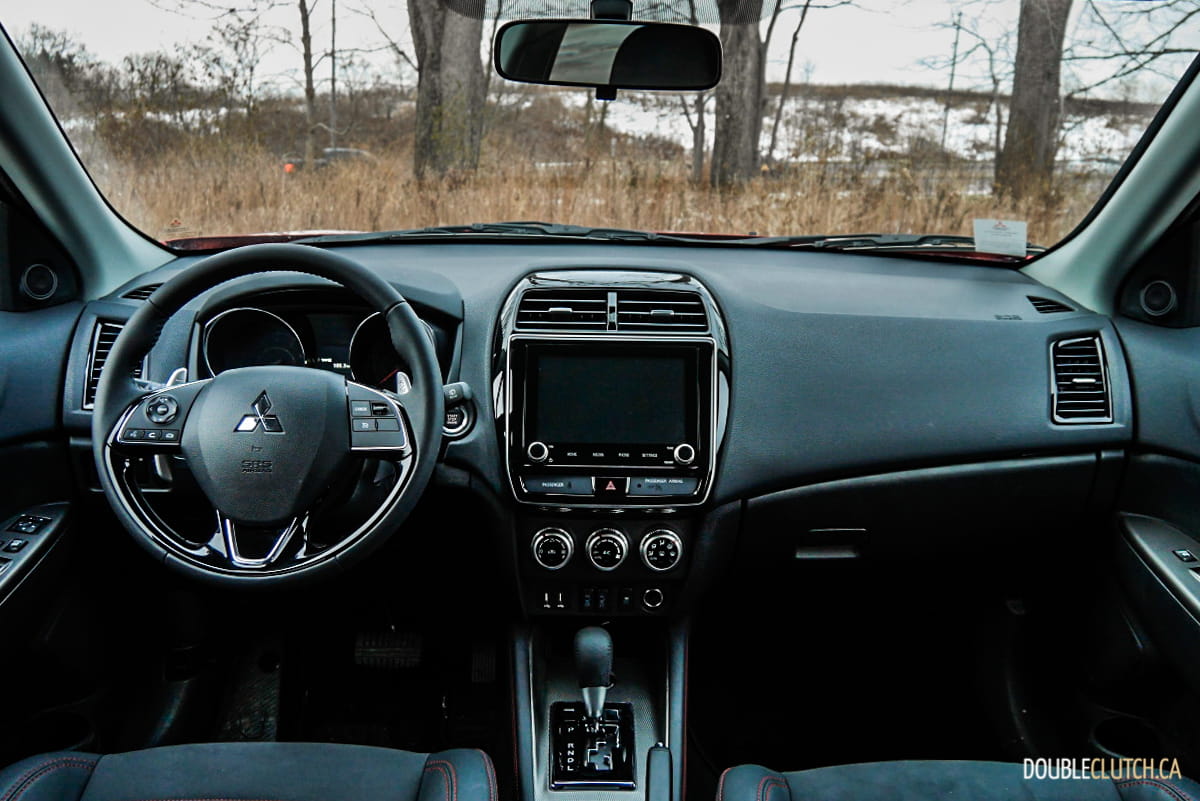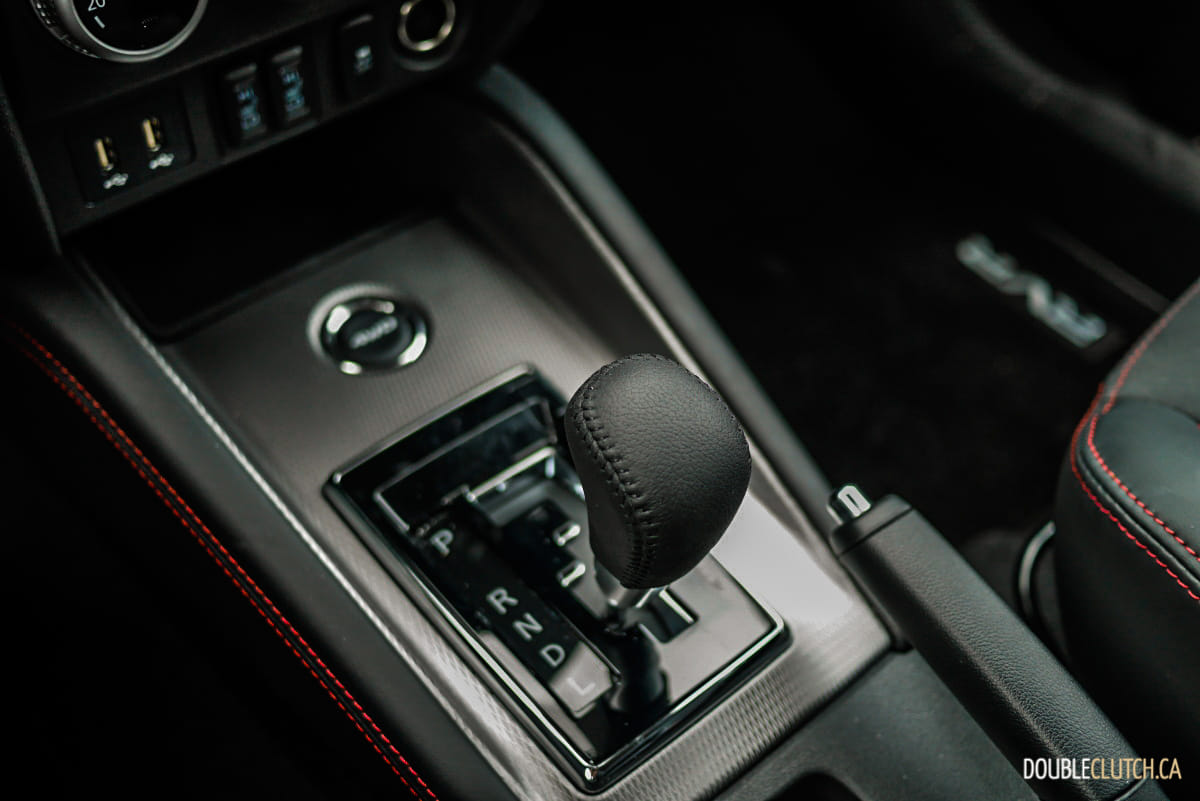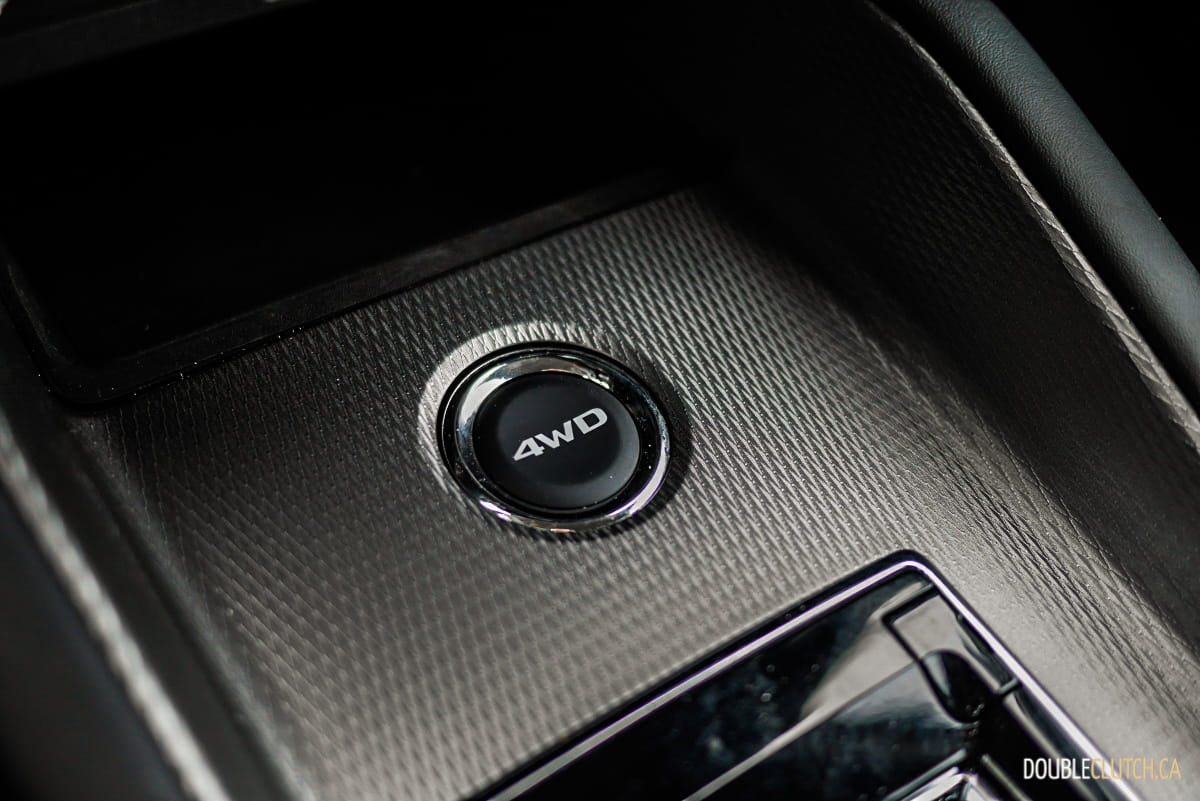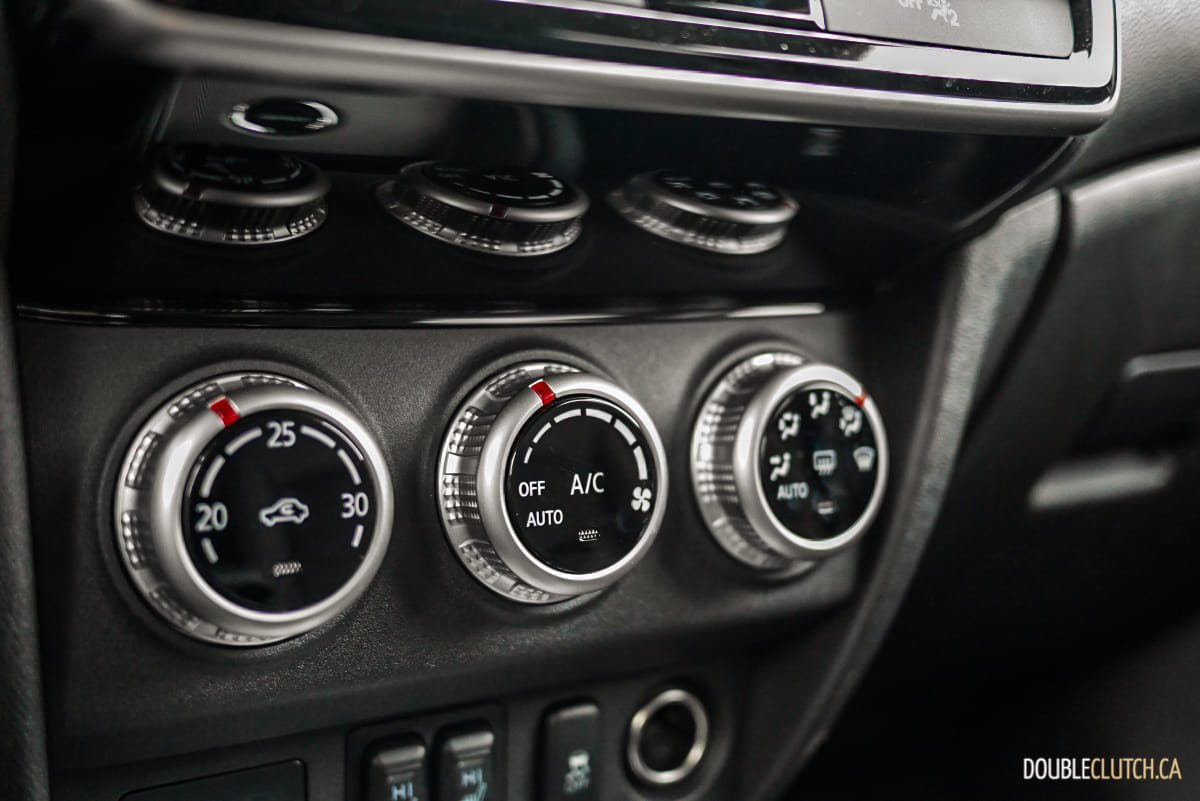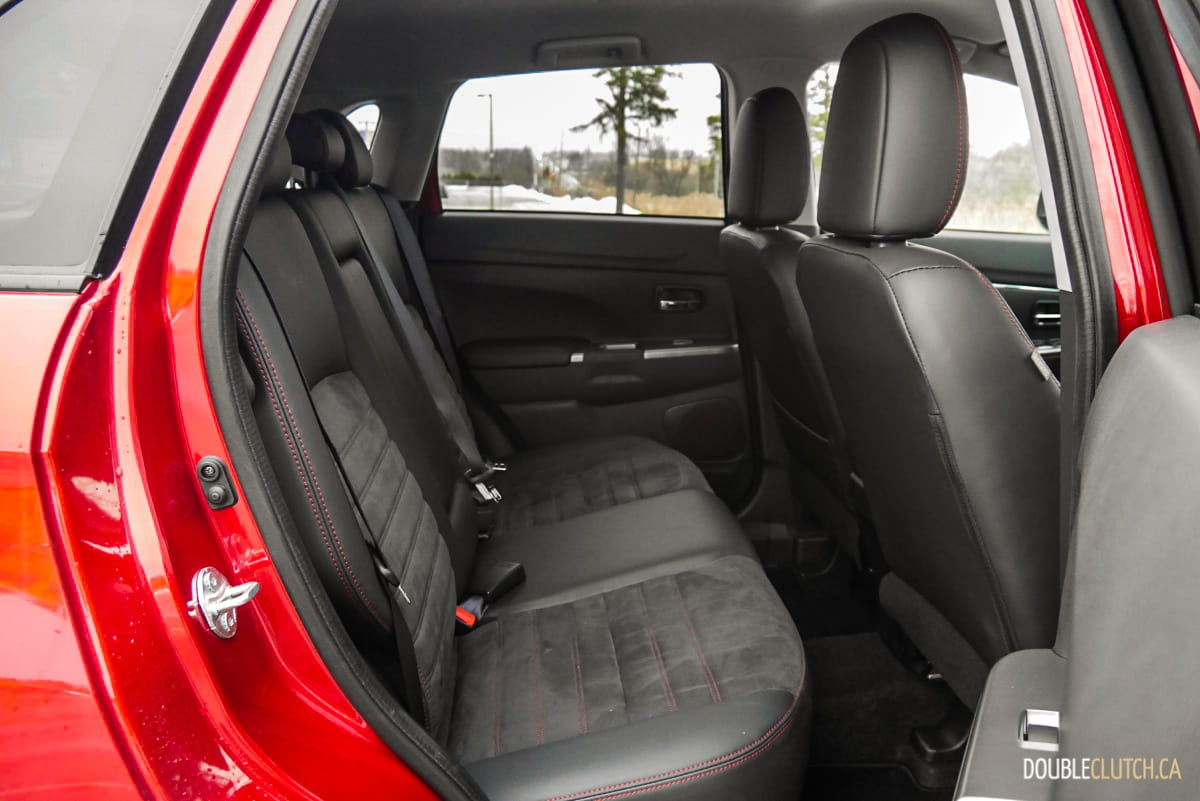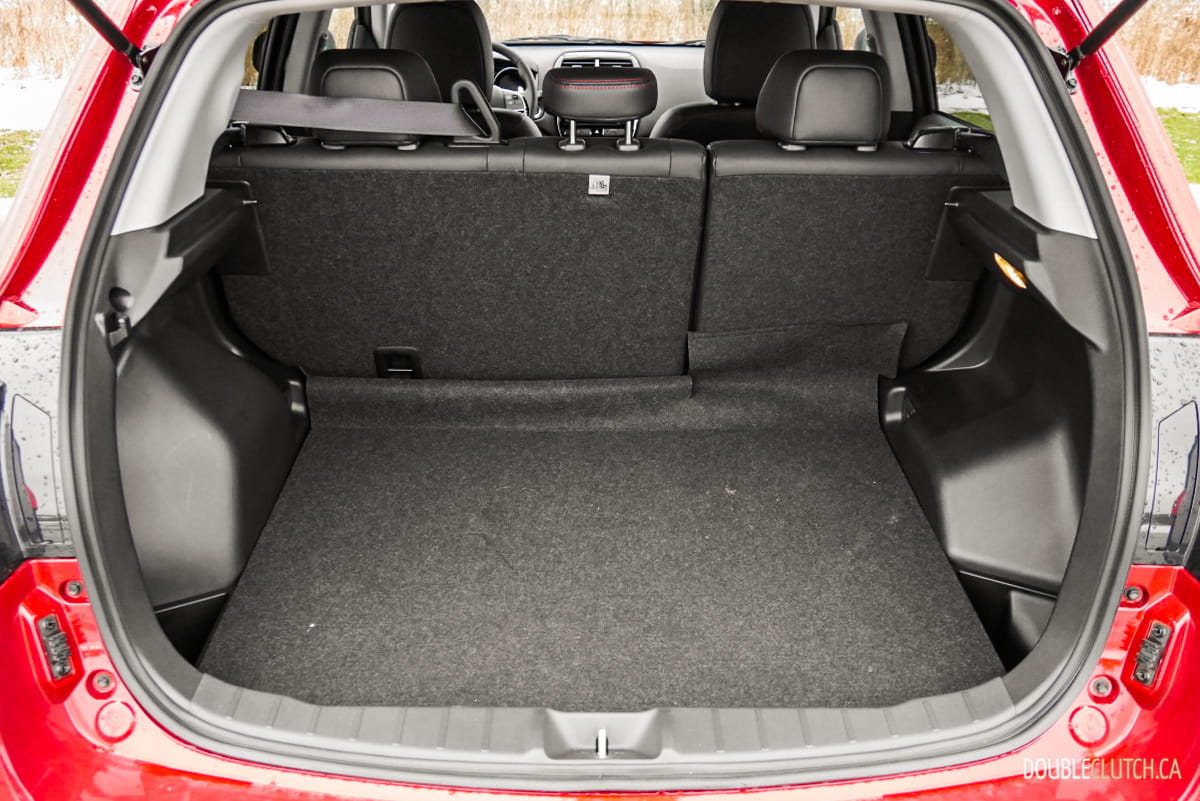The RVR is Mitsubishi’s bestselling model in Canada and the third-best selling nameplate globally, which is considered success for the small Japanese manufacturer based out of Tokyo, Japan. For 2020, the compact crossover has been put through a thorough refresh, including a facelift and some upgrades to the interior to keep it up to date for consumers in the compact crossover segment.

This week, we have borrowed the volume seller of the line-up, the 2020 Mitsubishi RVR SEL AWC. It is up against stiff competition with the likes of Honda HR-V (reviewed here) Mazda CX-3 (reviewed here), all giving Mitsubishi’s urban-ute a serious run for its money. Mitsubishi’s main selling point in this segment is price, and a strong warranty (10-year/160,000km powertrain).

The RVR carries Mitsubishi’s new design language, including a grille and fascia that now features a similar design to the Outlander and Eclipse Cross (reviewed here) to maintain a coherent brand identity, and the stacked LED fog lamps and turn signals lighting unit added some modernity over last year’s design. Overall, the RVR is an attractive option in the compact crossover segment, with extra styling points to the newly added Red Diamond paint colour and the SEL AWC and GT AWC specific 18-inch wheels.

A change for 2020 is the inclusion of the RVR’s larger engine in the value-oriented SE AWC trim level, joining SEL and GT models. The 2.4-litre four-cylinder produces 168 horsepower at 6,000 RPM, and 167 lb-ft. of torque at 4,100 RPM, with Mitsubishi’s INVECS-III CVT routing power to all four wheels. The bigger displacement gives the RVR some added oomph over the standard 2.0-litre unit, but the all-wheel drive system and its extra 176-pound weight is evident under hard acceleration, making the RVR feel significantly more sluggish than its power figure suggests.
A rare feature for its class is the All-Wheel Control (AWC) system that allows drivers to select two-wheel-drive (2WD), four-wheel-drive (4WD) auto, or 4WD Lock by a push of a button directly in front of the shifter. Offering drivers the option of routing power through the front wheels only will help enhance fuel efficiency, while keeping it on 4WD Lock will aid navigation through difficult winter road conditions and light off-road terrain.
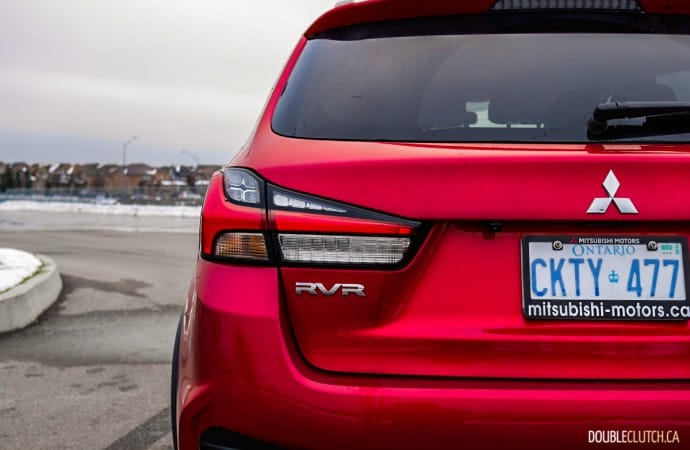
Despite its athletic looks and the more powerful powerplant, the RVR SEL remains a rather mundane and low-rent driving companion. Steering is light and easy, with little feedback from the road. During hard cornering, the RVR has a tendency to dive, and when you combine that with the vague steering, it makes for a messy experience. The good thing is, the RVR has solid and consistent brake feel.
What buyers will do however, is lots of urban driving and therefore fuel economy is usually an important aspect to consider. The RVR SEL has a fuel consumption rating is 10.3L/100km in the city, 8.3L/100km on the highway, for a combined rating of 9.4L/100km. During our weeklong evaluation, consisted of mostly city driving, we observed an 8.9L/100km consumption on regular gas. This figure is on the high end of what we have observed from its competition, and buyers who are looking to save on fuel will not find much savings even if they opt for the standard 2.0-litre engine as it is rated at 8.8L/100km in a combined setting.
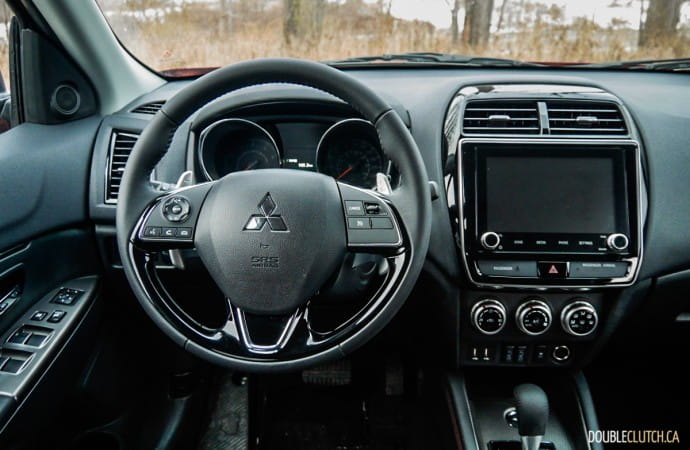
The biggest update to the RVR’s interior is a new eight-inch touchscreen that takes up most of the real estate on the centre console. Its screen size is impressive for the class, and resolution is quite good. Unfortunately, Mitsubishi’s infotainment left a lot to be desired as there is not much information to be found. On the home screen, drivers will find media selection, phone function, settings, vehicle info, and the all-important Apple CarPlay and Android Auto applications. A deeper dive into the vehicle info function reveals no real data for those keeping track. Vital information such as fuel economy, trip meter, outside temperature, service reminder, and drive modes are instead displayed on the colour multi-information display screen in the instrument cluster, a missed opportunity to utilize the much-improved display unit.
The rest of the interior is considered to be on par with competition. Our SEL AWC trim came equipped with black artificial suede interior and seating trims that felt better than some of the faux-leather used amongst peers, proximity entry with push button start, and an upgraded six-speaker audio system. Buyers who are looking for the most comfort features should opt for the top-trim GT AWC, which includes a power-adjustable driver’s seat, heated steering wheel, panoramic sunroof, and a powerful 710-watt Rockford Fosgate Punch nine-speaker audio system.

Interior space is about average for its class. There is good accommodation for front passengers, but rear passengers will find it a bit cramped with the sloping roofline cutting into headroom. The suspension is a bit on the firm side, and sound deadening is about the same as other crossover in its segment meaning you will hear a fair bit of buzzy engine noise, especially at higher speeds. Cargo capacity is rated at 614 litres.
Active safety is another aspect considered by crossover shoppers, and the RVR SEL AWC is also average in that regard. It comes with standard Blind Spot Warning and Rear Cross Traffic Alert systems, and shoppers who want Lane Departure Warning and Forward Collision Mitigation will find them on the GT AWC trim. This trails the Honda HR-V, which has made most of its driver assist technologies available across all trim levels, and we would like to see adaptive cruise control be part of the RVR’s features in the future.
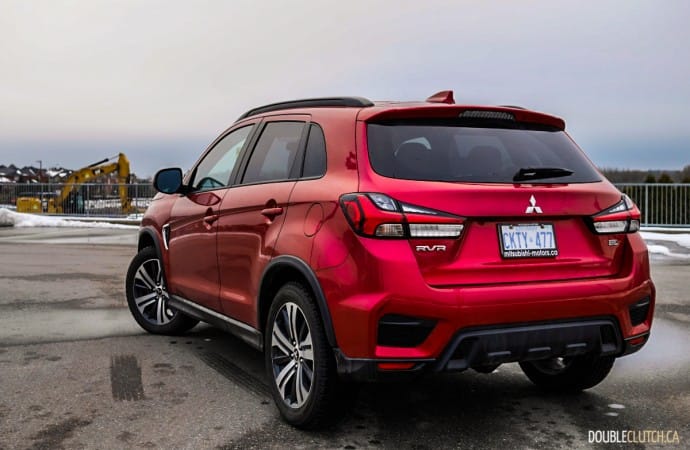
Pricing of the 2020 Mitsubishi RVR starts at $22,998 for the ES front-drive version. Buyers who are looking for all-wheel-drive will have a new affordable trim line to choose from, with the ES AWC at $25,498. Our tester’s SEL AWC trim starts at $29,798, and the only option added was for the Red Diamond paint for $450, giving us an as-tested total of $30,248. This is expected to be the volume model in the lineup.
All in all, the 2020 Mitsubishi RVR SEL AWC is a competent compact crossover for buyers in the Canadian market who want an affordable urban utility vehicle. The added winter confidence from its all-wheel-drive system, as well as a strong warranty will likely allow the RVR to remain a player in this ever-growing segment.
See Also:
2019 Mitsubishi Eclipse Cross GT S-AWC
2018 Nissan Rogue SL Platinum
2019 Subaru Forester Premier

